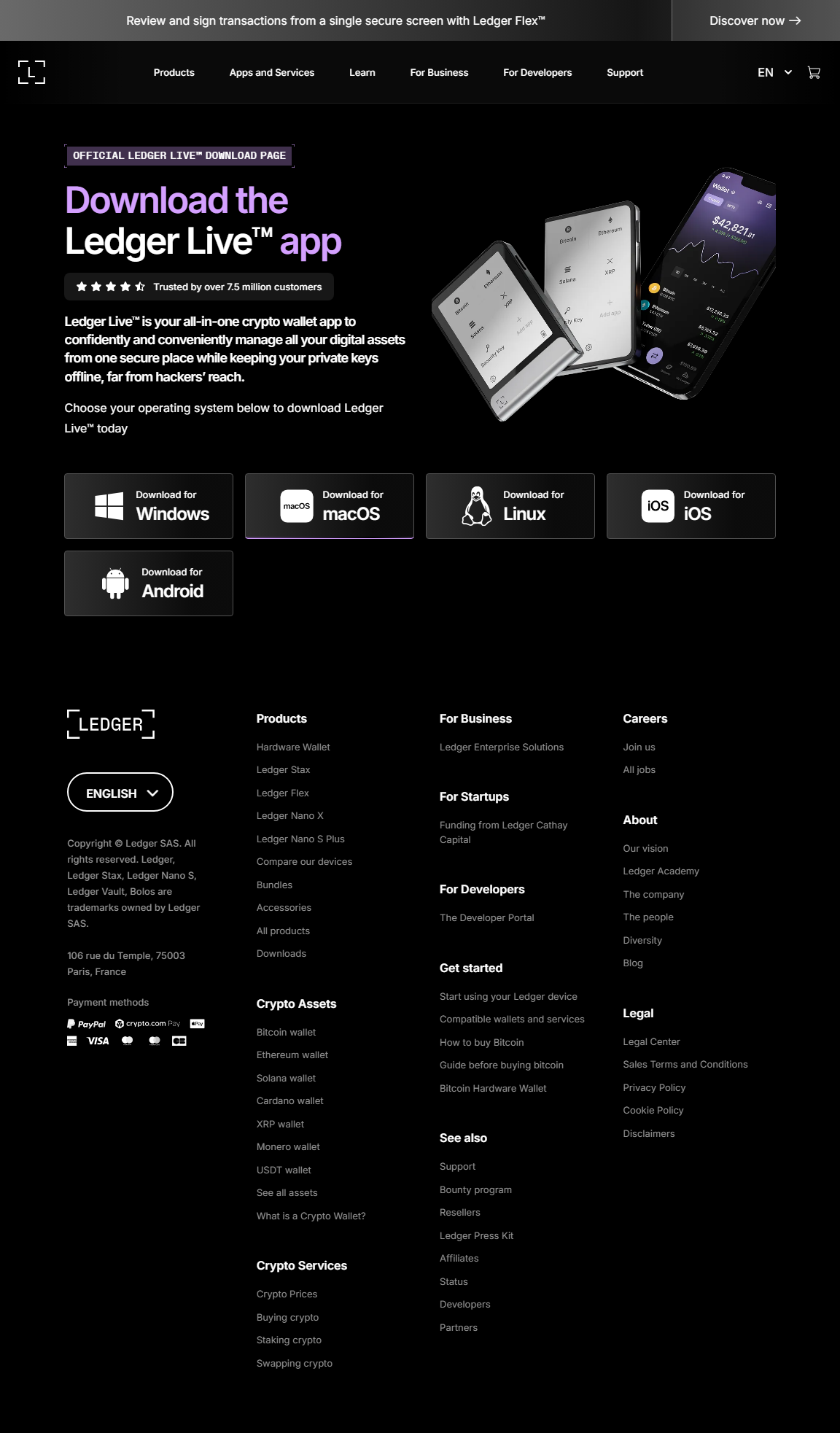Ledger Login – The Ultimate 2025 Guide to Secure Hardware Wallet Access
Your complete, beginner-friendly, deeply detailed walkthrough of how Ledger login works, why it’s different from normal crypto logins, how to stay safe, what to avoid, and how to use your hardware wallet with maximum security.
What Does “Ledger Login” Actually Mean?
Most crypto services use a typical login: email + password + 2FA.
Ledger login is completely different. There’s no online account and no cloud authentication. Instead, your login consists of:
Ledger login is completely different. There’s no online account and no cloud authentication. Instead, your login consists of:
- A Ledger hardware wallet (Nano S Plus, Nano X)
- Your secure PIN on the device
- An optional Ledger Live password lock
Why Ledger Avoids Email-Based Accounts
Ledger’s login model protects you from:
- Phishing attacks aimed at stealing passwords
- Server data breaches that expose accounts
- Cloud-based exploits that compromise wallets
- Remote access attempts on your account
Hero Spotlight – What You Access After Ledger Login
- Full crypto portfolio view
- Real-time asset prices and profit/loss analysis
- Send, receive, and swap crypto securely
- Staking for ETH, DOT, SOL, ADA, and more
- Web3 and DeFi access with physical approval
- NFT viewing and management
- Firmware updates and hardware maintenance
- Multi-chain account management for dozens of networks
How Ledger Login Works – Step-by-Step (2025 Edition)
Step 1: Open Ledger Live
Launch Ledger Live on desktop or mobile. If you enabled a password lock, this is your first login step.Step 2: Connect Your Ledger Device
Use the USB cable (Nano S Plus) or Bluetooth (Nano X). Enter your device PIN — the central part of Ledger login.Step 3: Open the Blockchain App on Your Ledger
If you're dealing with BTC, open Bitcoin. If ETH, open Ethereum. Ledger Live syncs instantly to your hardware wallet.Step 4: Ledger Verifies Your Device
A Secure Element chip confirms that your device is genuine and not tampered with.Step 5: Access the Ledger Dashboard
Your portfolios, NFTs, accounts, and charts appear instantly.Step 6: Approve Any Action with Your Ledger
Sending crypto, staking, or connecting to Web3 requires manually confirming the action on your Ledger device.Ledger Login Troubleshooting – Quick Fixes
⚠️ Ledger Device Not Detected
Try a different port, cable, or restart Ledger Live. Ensure the device is unlocked.⚠️ Incorrect PIN Attempts
After three incorrect PIN entries, the device resets — restore with your 24-word phrase.⚠️ Ledger Live Password Forgotten
Reset the password in settings — no funds are affected.⚠️ Ledger Live Stuck or Freezing
Try clearing cache, reinstalling the app, or temporarily disabling VPNs.Ledger Login vs Exchange Login – Clear Comparison
| Feature | Ledger Login | Exchange Login |
|---|---|---|
| Authentication | Hardware wallet + PIN | Email + password + 2FA |
| Private Key Storage | Offline, device-only | Online servers |
| Security Risk | Extremely low | High (phishing & breaches) |
| Access Recovery | 24-word recovery phrase | Email reset |
Security Tips for a Safe Ledger Login
- Enable the Ledger Live password lock on all devices.
- Use a strong and unpredictable PIN.
- Never enter your 24-word recovery phrase anywhere online.
- Always verify addresses on your Ledger device screen.
- Keep firmware and Ledger Live fully updated.
- Avoid suspicious dApps or websites pretending to be Ledger.
Ledger Login FAQs
Does Ledger have an online login page?
No. Ledger login is fully local and hardware-based.Can someone log into Ledger without my device?
No — your Ledger device is required for all secure actions.Is my crypto stored in Ledger Live?
No. Your crypto stays on the blockchain — Ledger only displays it.What happens if my Ledger is lost?
Restore access using your 24-word recovery phrase on a new Ledger device.Conclusion – Ledger Login Keeps Your Crypto Truly Safe
Ledger login is engineered for maximum protection — no email accounts, no cloud logins, no remote access points.
With hardware-based authentication and offline key storage, your digital assets stay protected even if your computer or network is compromised.
Whether you’re sending crypto, connecting to Web3, or checking your portfolio, Ledger login ensures you're always in control — safely, securely, and confidently.
With hardware-based authentication and offline key storage, your digital assets stay protected even if your computer or network is compromised.
Whether you’re sending crypto, connecting to Web3, or checking your portfolio, Ledger login ensures you're always in control — safely, securely, and confidently.
